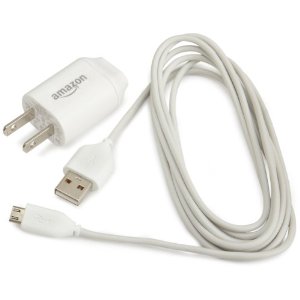 Some things I collect avidly and with great pleasure, like detective stories. Others I accumulate reluctantly and with increasing distaste, like power supplies.
Some things I collect avidly and with great pleasure, like detective stories. Others I accumulate reluctantly and with increasing distaste, like power supplies.
As with most twenty-first century households, we have an ever-growing collection of power supplies for various devices which have broken, been stolen or simply retired from old age. ‘I’ll keep the power supply!’ I think. ‘It may work for something else!’ But it seldom does. Each new manufacturer feels duty-bound to require some new combination of voltage and jack size which renders every previous power supply totally useless.
I recently acquired a new ten-inch Android tablet as part of a phone deal. It charges through what looks like an iPod jack, but it can’t be an iPod jack, because no iPod cable in the house fits it except the one supplied with the tablet. If that cable breaks, the tablet breaks with it. Of the five remaining tablets in the house, three of the smaller ones—amazingly!—use the same power supply; the fourth charges through a mini-USB port; and the fifth, my original ten-inch tablet, charges through a larger jack which matches only one other device in the house. Meanwhile my wife’s Kindle and my daughter’s iPad recharge through genuine iPod cables plugged into USB ports.
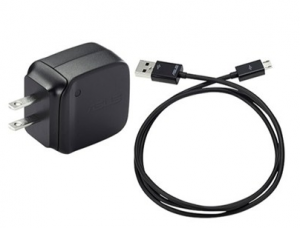 I could tolerate this rich diversity if the power supplies were actually powering the devices, but they’re not: they’re simply recharging them. Is it really beyond the capability of modern science to come up with a single jack and a single voltage to recharge all devices from, say, a mobile phone up to a netbook computer?
I could tolerate this rich diversity if the power supplies were actually powering the devices, but they’re not: they’re simply recharging them. Is it really beyond the capability of modern science to come up with a single jack and a single voltage to recharge all devices from, say, a mobile phone up to a netbook computer?
And it doesn’t end there. Because some of my tablets are sourced from overseas, the power supplies have US plugs, with two parallel prongs, while Australia, where I live, uses prongs at an angle. I need a prong adaptor to make them fit an Australian power socket. This is fine when the plug and the adaptor fit snugly and hold together, but this is rarely the case, and what usually results is a top-heavy Rube Goldberg arrangement, held together with rubber bands, which droops dangerously out of the socket. However, the new ten-inch tablet supplier has done the sensible thing, and provided an Australian power supply with a USB socket, and a cable with a USB plug. Separating cables from power supplies is clearly the way of the future.
Then we have the power supply which is so big that it hides the power sockets on either side, or sticks out to the right or left, and won’t fit a socket which is up against the wall on that side. In Australia we lay out power boards and multiple wall sockets horizontally, and so—as far as I know—does the rest of the world. What kind of maniac would design a power supply that deliberately blocks access to the one next to it? Up, down, left right—make up your minds, folks!
Mobile phone manufacturers have, I understand, agreed to standardise their power supplies. Isn’t it time tablet and e-reader manufacturers did the same thing?



















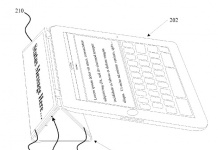


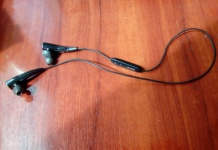
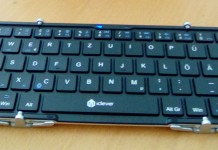










Amen! I’m about to leave for a conference, and I need to bring 2 charging cables and three charging blocks with me. (iPad, iPhone and Nexus 7.) Ridiculous! At least they are small and can tuck in here and there. Still, I almost feel like a need a separate carry-on bag, just for power needs.
I couldn’t agree more. It isn’t even safe to stick with the same brand. The new iPad doesn’t have the same hookup as my old one. Where do we set up our tents?
What about all devices? Cameras, phones, laptops, thingamajigs, thingamabobs, and all the rest. Of course, you’d need a splitter to charge many devices at the same time. Is that to much to ask?
Cell phone manufacturers were *forced* to standardize to meet EU demands.
(Apple is fighting a rear-guard action by supplying a USB-to-LIGHTNING adapter.)
We may see a similar mandate for tablets but it’ll probably be a while and be tied to the new USB spec coming ca. 2015 where they are looking to increase the power available via standard USB ports. For now, the best we can hope for with the power-hungry high-res tablets is Amazon’s compromise: standard USB will trickle charge a FireHD8.9 overnight but for faster charging you need a proprietary power supply feeding the standard USB cable.
For some tablets, standard USB just doesn’t carry enough juice to feed the tablet.
I agree with Felix. For low-power devices, we’re going to just have to wait until the micro-USB standard takes hold, although we can aid it by making our own choices based on it.
If you have only a few places you charge gadgets, you might look into getting an AC outlet or power strip that includes several standard USB A ports. That’ll at least eliminate the need for some troublesome, outlet-blocking ‘bricks.’
I actually have a tote bag that is bursting with power cords of all sorts – random USB cords, mini-USB cords, old power strips, even the dock for my Palm Pilot that I bought in 2002, I think. I’ve had this thing in my closet for many, many years. And while most of it is junk, every now and again when I need something or I don’t have or can’t find, I spill the contents of the bag onto bed, and quite often I find what I need. Maybe two out of every three times.
I only get micro usb devices.
I got a Sony Tablet S new 2 months ago and looked for a spare power supply, but didn’t want to pay the £30 being asked, wish I had now because Sony now want £78 as they have discontinued this tablet and the new one has a different connector.
The EU at least has been pushing the micro USB standard on phone manufacturers, and that seems to have carried over to Android tablets. For all the standard’s shortcomings, it has made a difference here. Apple, predictably, didn’t help by deliberately fragmenting the market again. But these days I find myself making device choices based on power supply and ports, and I’m definitely going to choose those that work best with what I have already. I’m sure non-standardizing manufacturers are already losing out to customers making these choices.